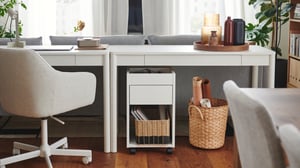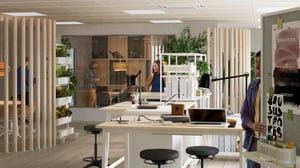Bamboo and its many sustainability benefits
Bamboo has many uses. When produced and used in in the right way bamboo has many possible environmental benefits. We are increasingly using it as a raw material in IKEA products.

Why we love bamboo
Bamboo is renewable, recyclable and durable – it’s a great material for many well-used products. Its strength also means that structural elements and boards can be made thin, so we can use less material per product than with other materials, natural resources are saved, and transport costs can be reduced.

That despite its size, bamboo is not a tree but actually a grass.

Bamboo is one of the fastest growing plants in the world and as a young plant can grow up to one meter per day.

There are 1,200 bamboo species in the world. But don’t worry, pandas don’t live where our bamboo is sourced.
Claims made on this the page come from the paper Yannick Kuehl, Giles Henley and Lou Yiping: “The Climate Change Challenge and Bamboo: Mitigation and Adaption”, INBAR working paper no 65.
Forest Positive Agenda 2030
As pressure on the world’s forests is increasing, more remains to be done. To learn about our Forest Positive Agenda for 2030 – where we will work together with others to enhance biodiversity, support the livelihoods of people who depend on the forest and mitigate climate change.

























